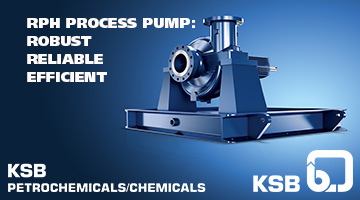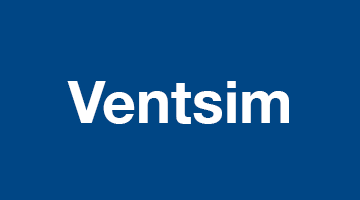MCA talks to Eduardo Werninghaus, CEO at WEG Africa, about WEG's comprehensive range of integrated, customer-centric power solutions and their role in transitioning industry towards more reliable, renewable and sustainable energy options.

WEG’s flagship hybrid power project in the south of Brazil combines WEG wind turbines with a solar PV plant and battery storage.
Click to download and read pdf
“WEG Brazil and Africa have made internal commitments in terms of sustainability, but we do not believe in telling customers what to do. Instead, we offer a comprehensive portfolio of modern, energy-efficient products for both generating power and efficiently using that power to drive industrial equipment. We are here to help clients with their transitions towards improved access to cleaner power, and the most efficient and cost-effective use of that power,” begins WEG Africa’s CEO, Eduardo Werninghaus.
Electric motors, he says, typically consume around 60% of the power used by the industrial sector, so a simple focus on switching to more energy-efficient IE3 or IE4 motors goes a long way towards meeting environmental commitments. But WEG can also offer a very wide range of power generation improvements, from using diesel power to using natural gas in backup generators, for example, or installing hybrid renewable power generation systems that combine a backup generator with solar panels and battery storage systems.
In addition, the company in Brazil is the OEM for an extensive range of modern and highly efficient steam turbines for anyone needing process steam, and steam turbogenerators for those with access to a fuel resource such as biowaste or a combustible off-gas, for example. “Steam is widely used in the African market, and we have WEG turbogenerators available that can be fuelled by ethanol or any biofuel from the waste bagasse from sugar plants,” adds Werninghaus.
In Brazil, he continues, where the sugar and ethanol business is very strong, there are even small pig farms that generate biogas from pig waste and use it to generate electricity via a steam turbine. “So we at WEG offer a broad scope of solution possibilities. The important thing for customers, though, is to journey with us, so we can use whatever available resources they have to develop turnkey solutions that best meet their daily needs, their sustainability commitments, and their investment budgets,” he tells MCA.
Pointing to a poster of one of WEG’s flagship hybrid power projects in the South of Brazil, he says this solution combines WEG wind turbines with a solar PV plant and battery storage, with WEG as the OEM and technology partner for the entire plant. “We developed this 1.0 MWh renewable power plant in partnership with a global energy and renewable energy supplier. This was an R&D project to assess the capacity of the WEG turbines to remain connected during grid instability.
“For us, this plant demonstrates our global capacity to deliver turnkey hybrid power generation solutions for our customers, everything from the turbines and PV panels to the inverters, switchgear and transformers involved in a complex grid-connected renewable power generation solution,” he says.
Turning attention back to local requirements, he says that mines and plants across Africa tend to be dependent on conventional diesel generators to back up unreliable electricity grids. “To make these backup systems respond faster and to help reduce emissions and costs from the diesel generator, we can add battery storage to these systems, and/or a renewable PV or wind generator, or even a steam turbogenerator.
“We analyse the options depending on the outcome the customer is looking for: be it peak shaving, their commitment to reduce GHG emission, or they may simply want a more reliable energy supply,” Werninghaus explains.
If there is a maximum carbon emissions requirement that needs to be met for the company’s transition, he says WEG will help customers to calculate how this can be met: and if it is about payback on electricity from a utility, then WEG engineers can help to find and develop the best combined hybrid option. “We are also 100% open to working with engineering consultants or other EPC companies that develop hybrid power solutions such as these,” he adds.
In terms of scale, he says that WEG can accommodate projects from a small commercial office to utility-scale power generation of hundreds of megawatts. “We can offer solutions from 500 kW up to 70 or 80 MW and more. A 50 MW plant is typically what the industrial market is looking at right now,” he continues, adding that if talking about a grid-connected wind plant, though, 100 to 200 MW would be more usual.
Depending on the resource availability, he says, WEG can also provide turnkey hydro-electric power solutions, and these can be quite small.
Increasingly, customers with older steam turbines or diesel generators are under pressure to reduce their gas emissions, so they are looking to use either far more efficient or different power technologies to meet their needs. This is where hybrid power solutions really come into their own. In addition, they come with added benefits such as better power availability and, in the longer term, they can reduce operating costs.
Hybrid solutions work because of the available natural resources, so before switching, an analysis of the available solar, wind or hydro resources is essential. Storage is also resource-dependent because it needs to make up for times when the natural resource or the external grid supply is unavailable.
Peak shaving can also be effectively managed through a hybrid power solution, and these systems are no longer unaffordable. In Brazil, he says, where peak demand tariffs are very high, the payback periods on hybrid system investments for keeping grid demand below the thresholds can be very attractive.
For best results, he advises that customers need to take a very close look at what their energy load looks like through the day, week and month. “This enables us to juggle the resources to match their availability, so that the power generated follows the load profile, while always ensuring it can react quickly to meet unexpected demand or supply shortages,” he says.
“Because WEG has such a flexible portfolio of products, we can take an unbiased position on which technologies to apply to a given situation. The best solution for the customer is always the one that best meets their needs. We talk to people, from farmers to miners to big commercial development companies, and we are always open to discussing what their priorities are and what they would most like to achieve. We then try to marry what we have to what is readily available to the client.
“This approach enables us to always provide best-fit sustainability solutions,” concludes Werninghaus.











